Imagine waking up at 4 a.m. for nearly two months, boarding a shuttle bus to class and occasionally dropping everything for an emergency evacuation landing drill.
That’s a typical day for LaKaisha Powell and thousands of other aspiring flight attendants at United Airlines’ Inflight Training Center at Houston’s George Bush Intercontinental Airport (IAH), where they endure a grueling seven-week program before serving millions of flyers every day.
“Some days it’s straight lecturing,” Powell said. “Other days, it’s hands-on. I prefer hands-on, it’s the fun part.”
The arduous program comprises lectures, where students learn about every single facet of an aircraft, and a plethora of hands-on drills, such as an emergency water landing or arming a Boeing 777 door.
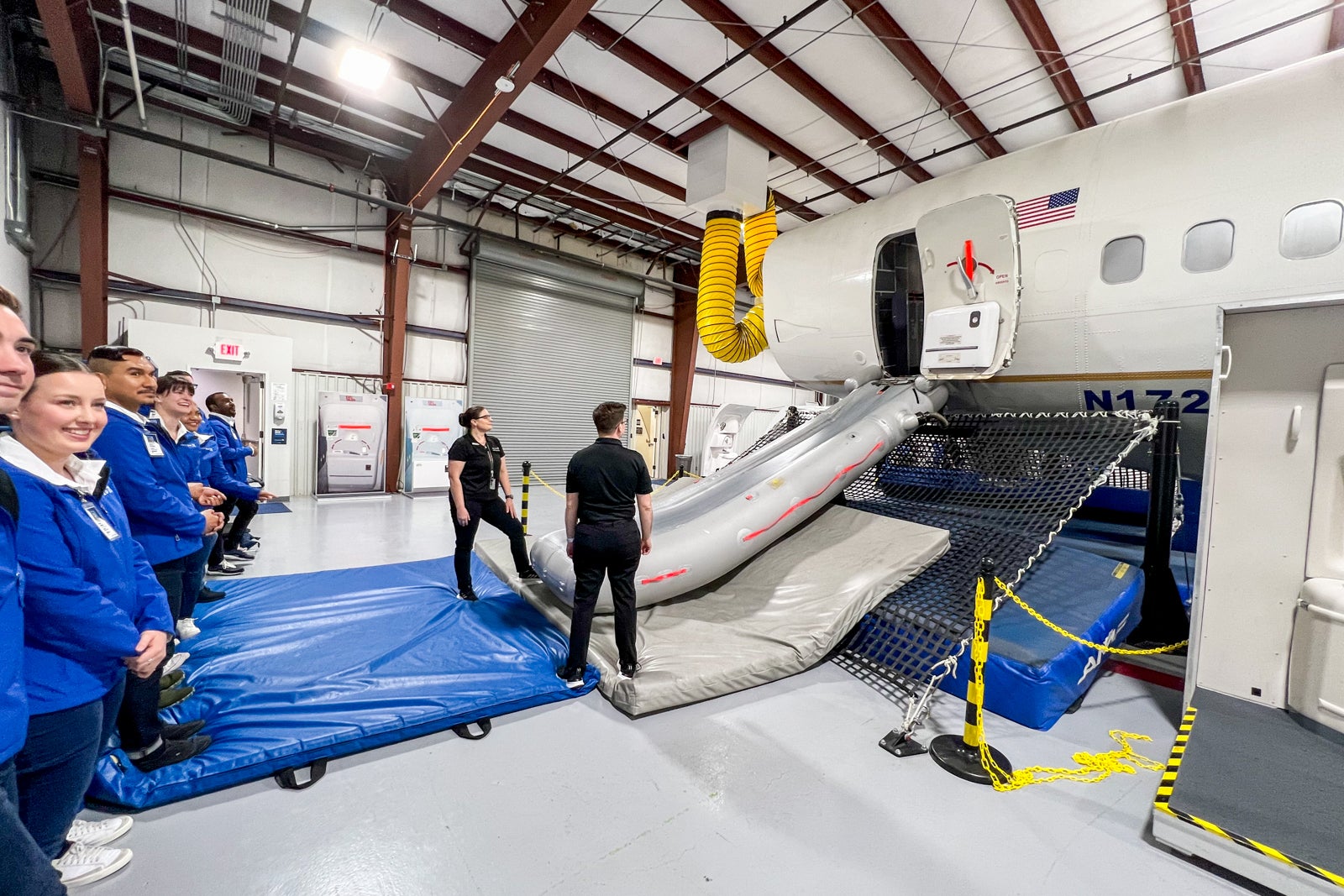
To keep up with demand and accommodate students making midcareer changes, there are also classes that start in the late afternoon and run all through the night.
While the program is fast-paced and intense, the process of getting to the training stage isn’t easy, either.
Ricky Ramos-Rodriguez, a senior manager of the center, said the airline receives approximately 69,000 applications a year for the flight attendant program. Only around 6% make the cut.
Only those who are accepted travel to Houston for proper training.
United trains new flight attendants at its newly renovated $32 million facility in Houston. The facility, which opened its doors in January, trains 600 aspiring flight attendants a month in the hopes of addressing a staffing shortage that has plagued the industry during the COVID-19 pandemic.
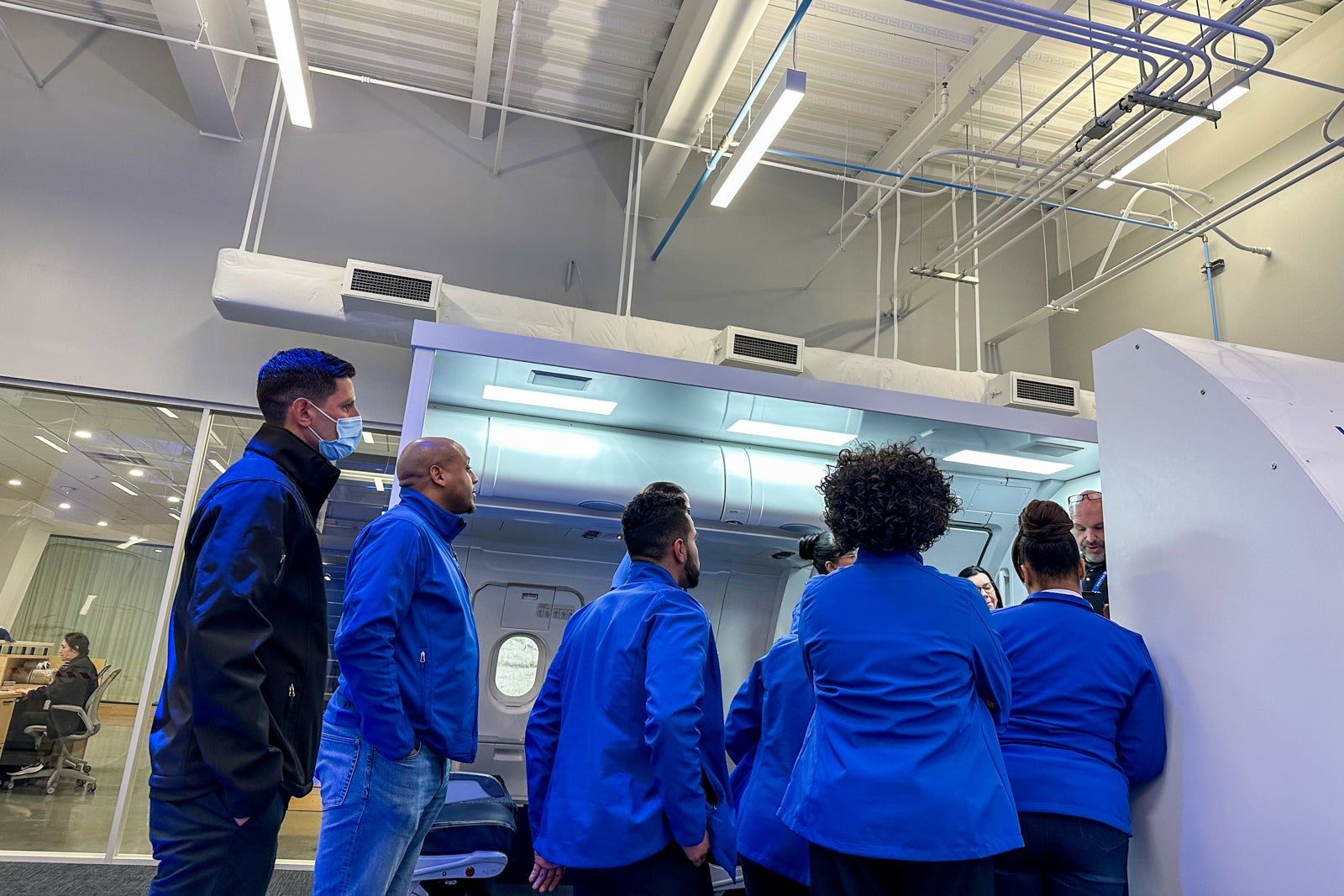
The bright, modern and spacious Houston facility includes a lecture hall big enough for 400-plus people, a room filled with a variety of cabin and door trainers to help students practice evacuation procedures, and a 125,000-gallon aquatic center for water landing training.
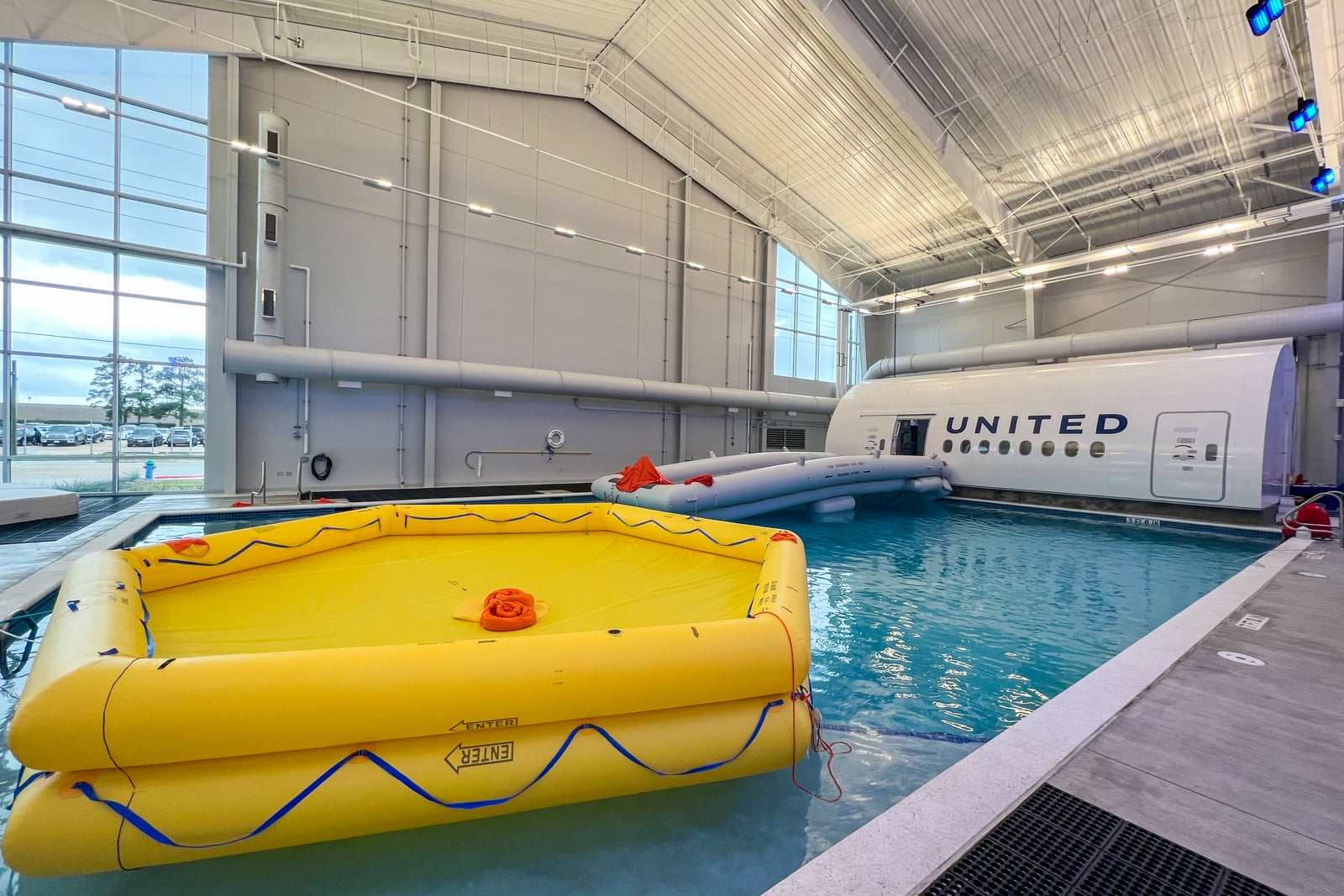
This new aquatic center makes United’s program stand out from other airlines’ programs. While some airline training centers have a pool for practicing emergency water evacuation procedures, United’s is currently one of the only aquatic centers in the industry with a “plane” stationed alongside the pool, which flight attendants can jump out of before swimming to a life raft.
‘Maybe this is my sign’: A diverse range of backgrounds
The program attracts people from all sorts of backgrounds. Some entered the program straight out of college, while others worked different careers for decades before switching gears.
Rukiya Mustafaa, who is from Georgia and has completed five weeks of United flight attendant training, worked in health care and coding before she decided to make the leap over to flight attendant.
While working remotely during the pandemic, Mustafaa said she realized she wanted to become a flight attendant after discussing her life goals with her therapist.
“After I was talking about it briefly, I started to see ads on every social media platform, so I thought, ‘Maybe this is my sign,’” Mustafaa said.
Alexis Spexarth, who graduated from college in December, just started the program. She said she decided to become a flight attendant at her mother’s recommendation.
“I never really had a fun job,” Spexarth said. “I never did bartending or serving or anything like that, so I was like, ‘Maybe I’ll do a cruise ship.’ My mom actually recommended [it], she was like, ‘You’re young, you can travel, you can … get paid to go all these places and you’ll learn a lot.’”
As we walked down a hallway with poster-size representations of each of United’s bases, we learned that during week one of the program, the aspiring flight attendants find out which airport will be their base once they finish training. The process is something that’s almost conjured from “Harry Potter.”
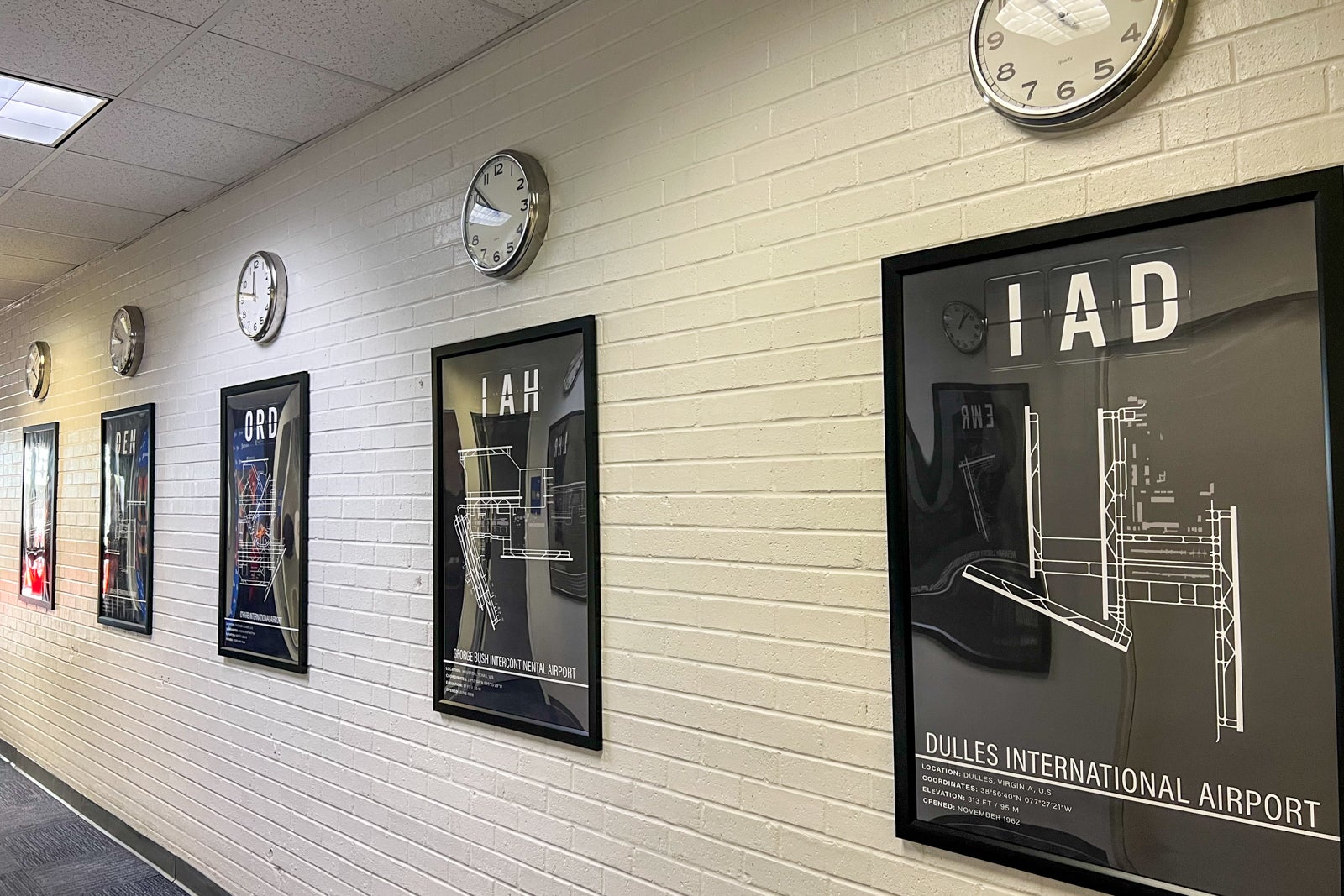
Bases are the airport and city a flight attendant calls home — all their trips start and end at the base.
By the end of the first week, the future flight attendants learn what city they’ll call home in a splashy ceremony. They might, for example, receive a boarding pass that tells them their base.
Typically, United gives the students in each training class the option to bid on four of its eight hubs — San Francisco, Newark, Denver and Washington, D.C. (and sometimes, even London) are the most common choices for the attendants’ new home bases. Preferences are determined by seniority within the training class, which is assigned by a randomly generated employment number.
Base selection is done during the first week so these flight attendants in training can have as much time as possible to figure out where they are going to live and make arrangements. While most tend to get their first choice for trip assignments, that’s not always the case.
Mustafaa and Spexarth are going to be based out of San Francisco International Airport (SFO) once they complete the program. Powell will service flights out of Denver International Airport (DEN).
When Mustafaa found out she’d be moving to San Francisco by the end of the program, she said she was nervous because of how expensive the city is, but she’s also excited since she’ll soon embark on many trips to Asia from SFO. In fact, she said she’s already received her Chinese visa for those long-haul flights out of California.
“I said, ‘You know what? God always has a plan for you,’ so you have to look at the positive,” Mustafaa said. “And now I’m excited to go to San [Francisco].”
The highs of being a flight attendant — and some turbulence
Though participants may experience many highs while in the program, there are some more stressful moments, too. Not only are the days long and filled with lectures and homework, but the hands-on drills can also be physically demanding.
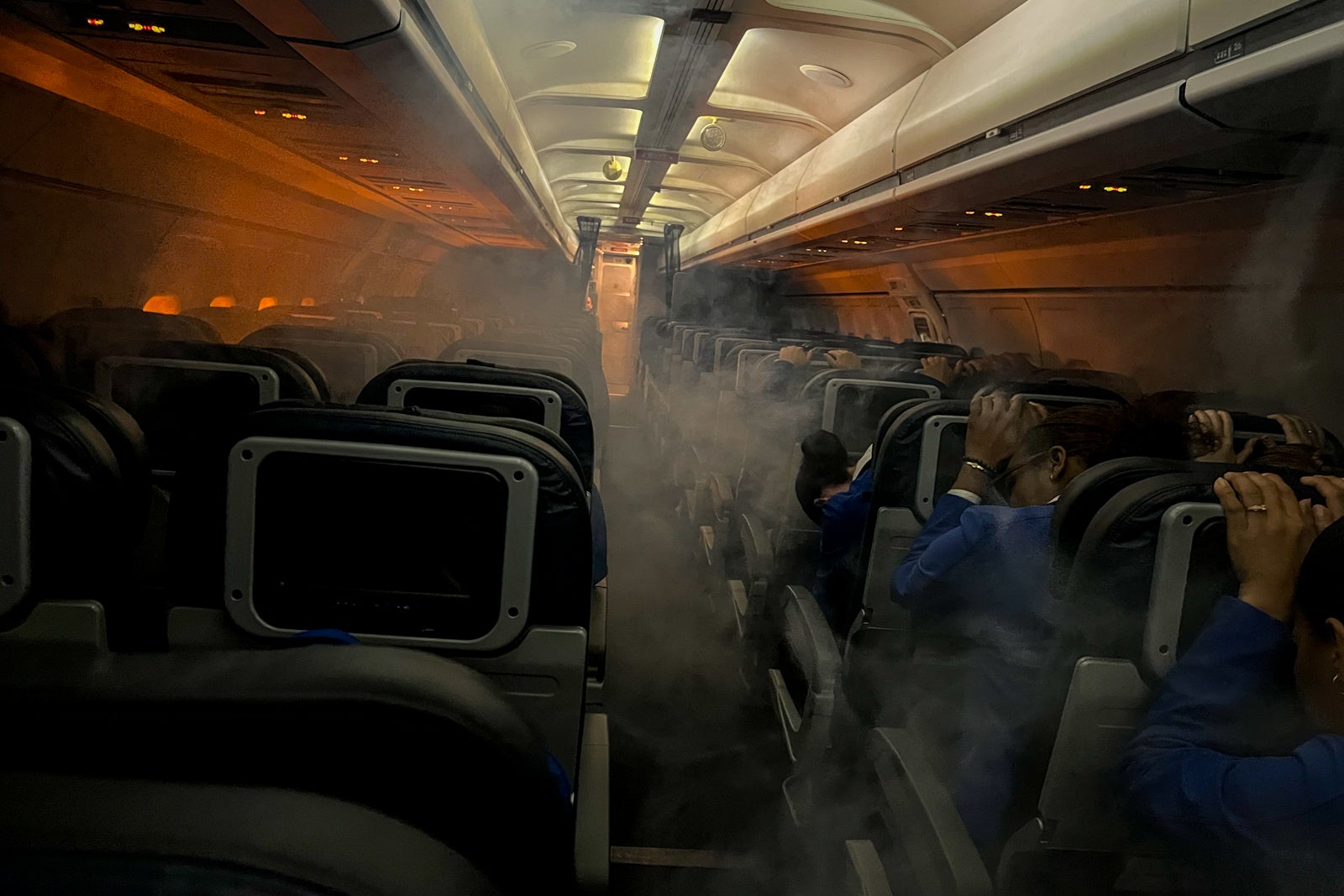
I tried a few of the drills students at United’s Inflight Training Center practice every day, and they were anything but easy. Opening an emergency door requires a lot of strength.
And then there was jumping out of a plane into a 7-foot-deep pool, which was the easy part. You then have to hoist yourself onto a floating life raft, which is difficult even in a very controlled environment with lifeguards standing by.
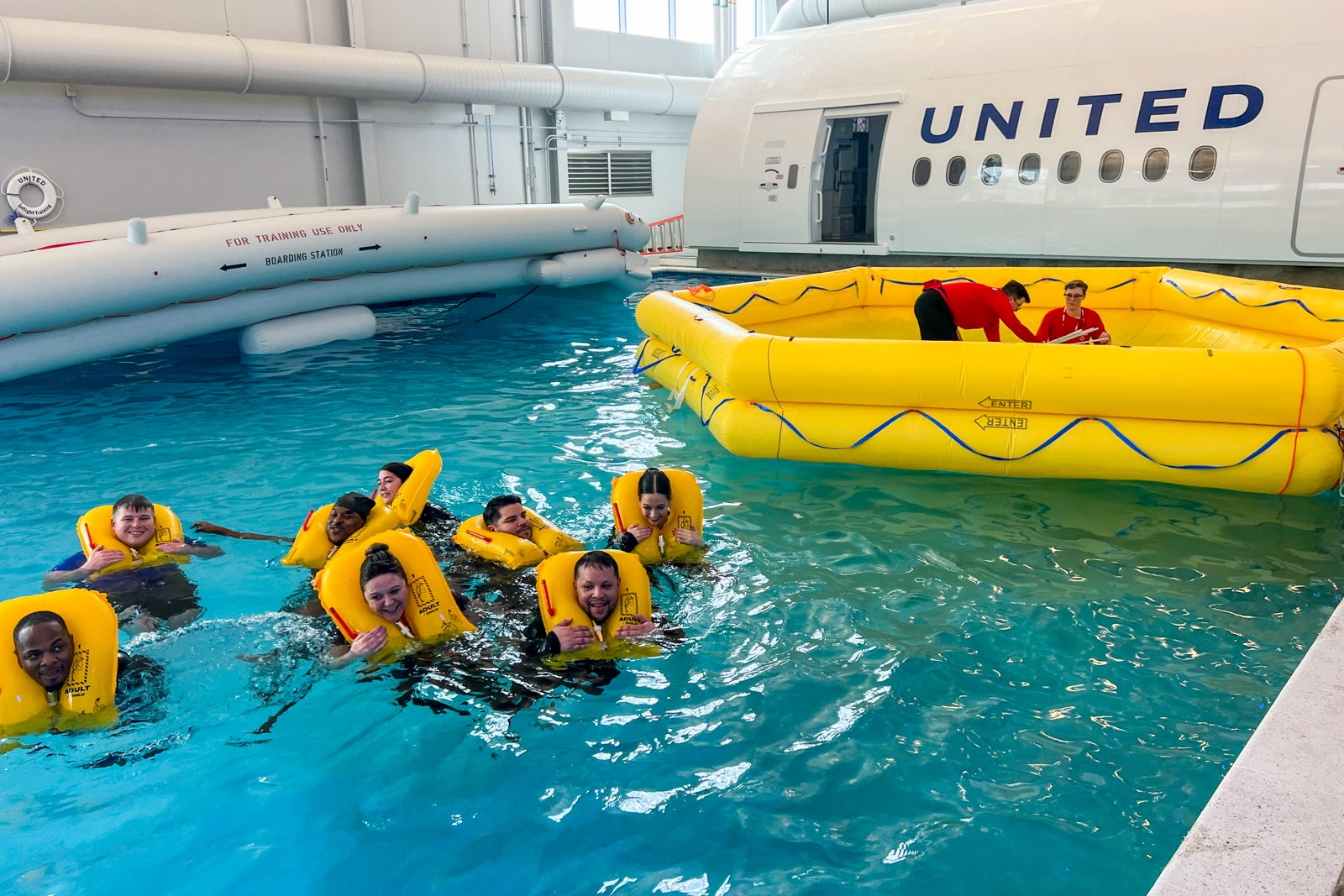
Arming the doors of an aircraft to ensure the emergency evacuation slides are active also has many steps that have to be completed before passengers can board.
And if those doors aren’t swiftly and properly disarmed before passengers exit an aircraft after an uneventful flight, an expensive and unfortunate slide deployment can ensue.
After trying many of these tasks myself, I left the center wondering how flight attendants can possibly remember to do every single one of these tasks correctly. After all, once these students become flight attendants, they’re not only juggling safety tasks but also catering to the needs of passengers.
“How do you do that well when you’re new and someone comes up to you while doing your checks to say their kid just threw up?” Ramos-Rodriguez asked.
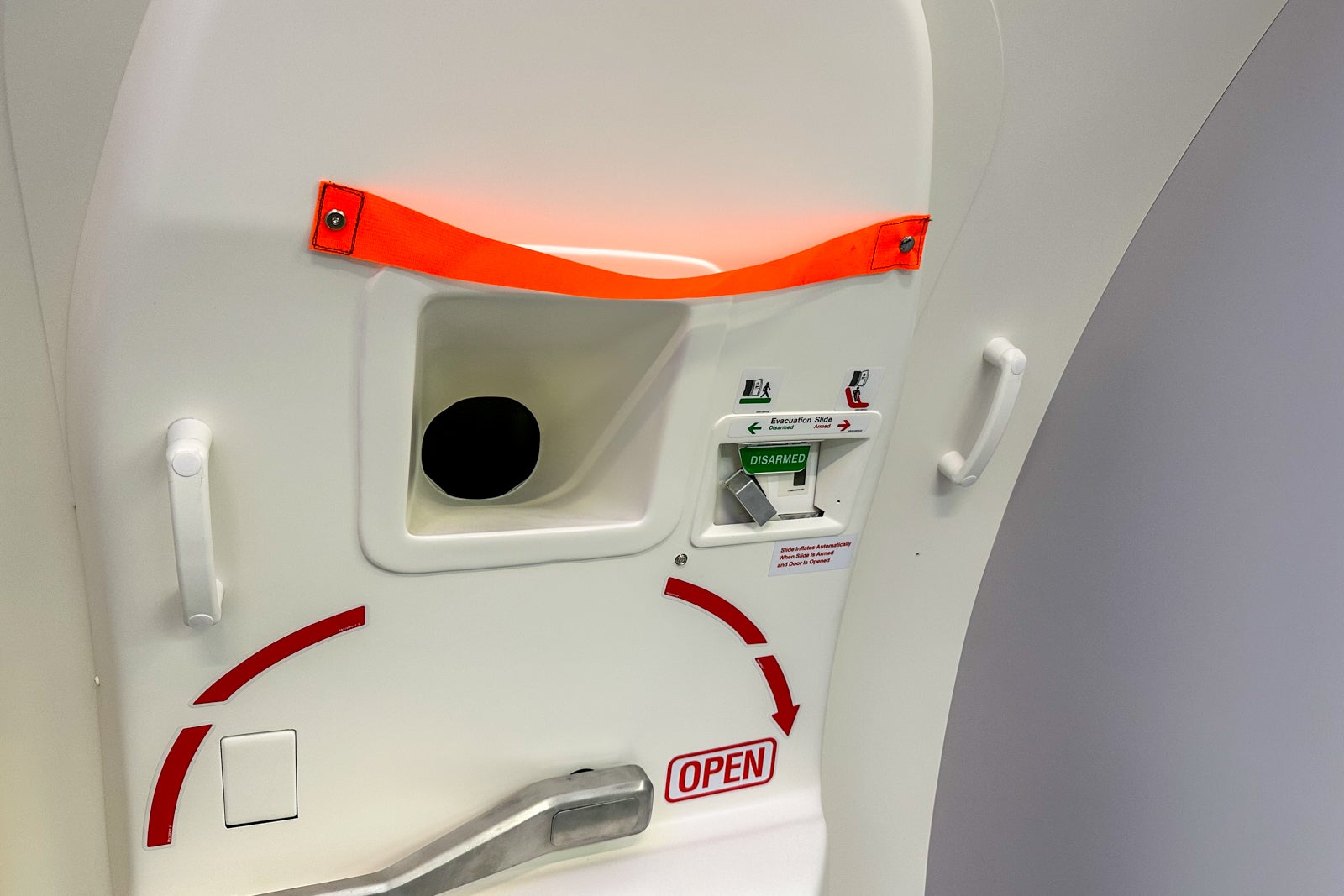
That thought lingered when I boarded my flight from Houston back to New York City, while the flight attendants on board conducted all their checks while handling customers with crying children or those with seat complaints.
Despite the stress that comes with the training (and the job), the students in Houston said it was worth it. There’s a real sense of camaraderie among the many cohorts in United’s program: They form study groups or, sometimes, they take trips to get manicures and pedicures.
“We all sit down at the hotel, we have … a little study lobby, we all bounce ideas off of each other,” Mustafaa said. “We quiz each other. I think that’s why all of us are still here; the majority of us are still here because we help one another.”
As the final few weeks of the program roll around, students realize they won’t be able to have the exact same bond once they become flight attendants. They’ll be scattered around different bases across the country and working on some of the 4,500 daily flights operated by United.
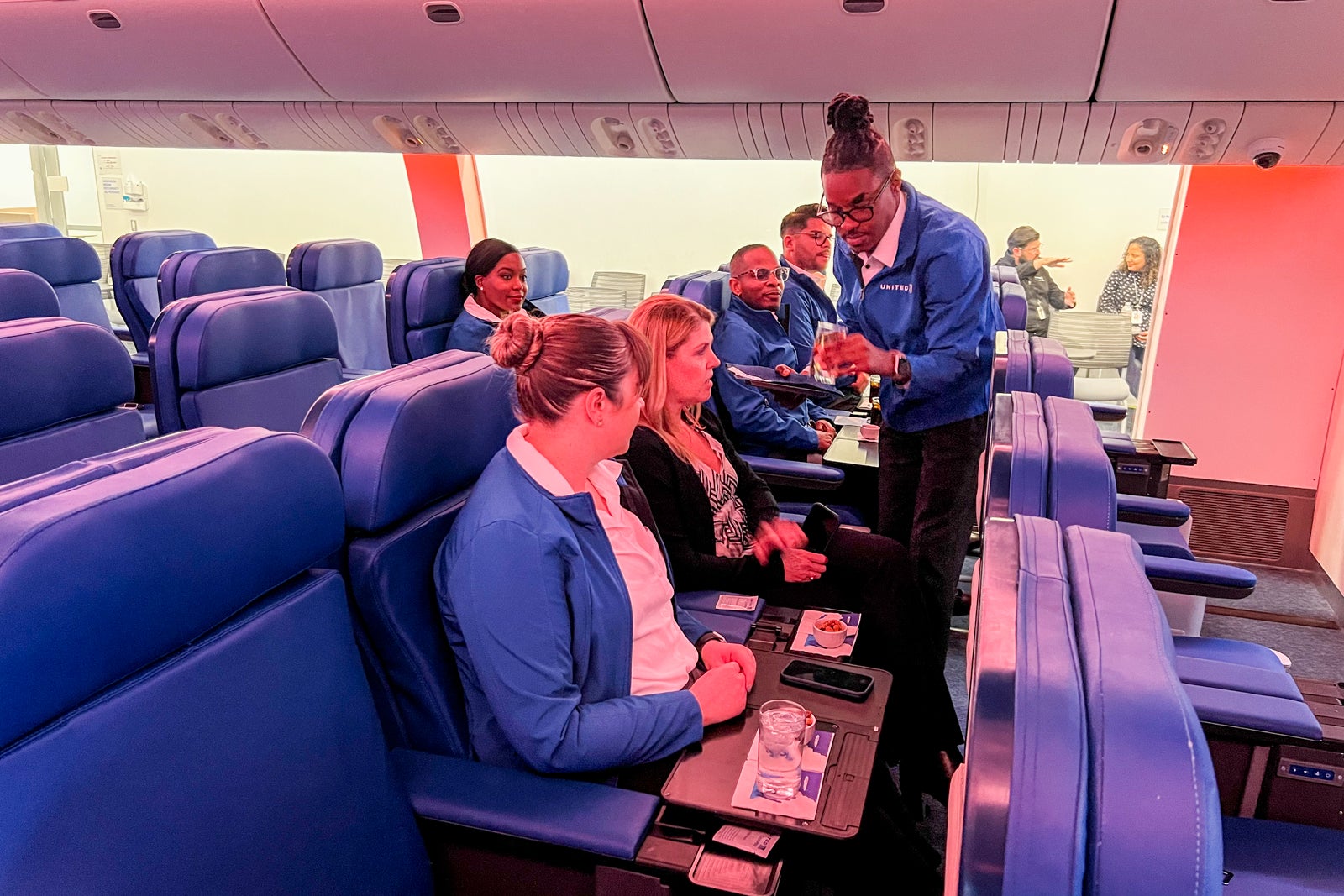
“We know that once we get to the point of receiving our wings and our bases,” Powell said, “we may pass each other, but we won’t really have time together like we’re used to having.”
While this cohort of flight attendants in training won’t continue to spend days and nights together after these seven training weeks are up, the framework to quickly trust and work with other flight attendants they will encounter at 36,000 feet has been set.
“I don’t feel nervous or timid,” Powell said about reaching the end of the program. “Because I’m confident that I’ve been trained adequately to deal with whatever may come this way.”

